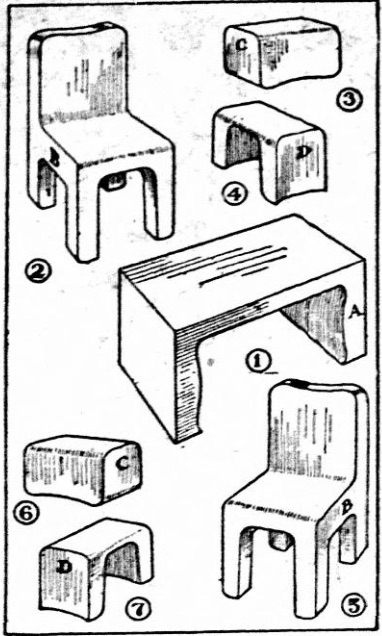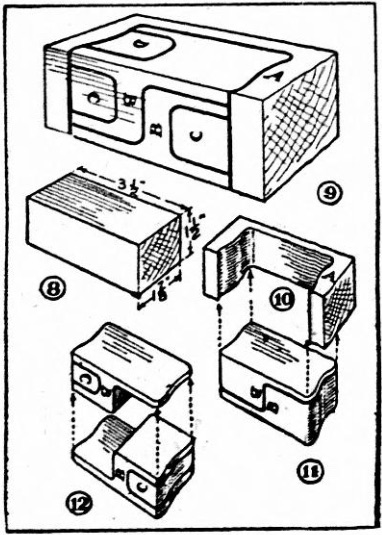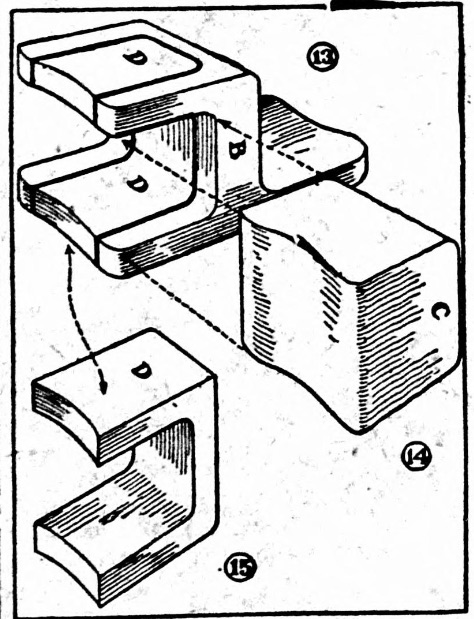
If you have blocks of wood lying about and want to make some simple doll house furniture, here are the instructions as originally published in 1920.

Doll House Furniture for a Girl’s Christmas
This is one of the most unique puzzle blocks I have ever seen, and it makes a set of furniture that any girl would be glad to own for her doll house.
Stand the seven pieces of furniture shown in Figs. 1 to 7 upon a table, and tell a friend to fit them together so as to form a symmetrical block of the dimensions shown in Fig. 8, and he will think you are joking. It can be done, because the pieces were cut out of a block of the size shown. By comparing the letters which I have placed upon the pieces of furniture, with the letters upon the block in Fig. 9, you will see how the pieces fit together. It is best to mark out the pieces exactly as they are indicated upon the block in Fig. 9 before starting to cut.
To save any confusion only one cut is shown upon Figs. 11 and 12, in the order in which it should be made.

A small bracket saw, or what you probably know as a hand scroll saw, should be used for cutting out the pieces, because a very fine blade is necessary. The block should be of white pine, free from knots and cracks. Cut it to the dimensions shown in Fig. 8 and plane its surfaces straight and smooth; then upon the two face and two side surfaces, mark off the lines on which to cut. The corners are shown rounded because it is necessary to cut them that way in order to turn the corner with the saw blade.
The first piece to cut out is the table (Fig. 1); this is marked A in Figs. 9 and 10. When you have removed this piece from the two ends and one side of the block, a block like that shown in Fig. 11 will remain.

The next step is to separate the remaining block into two equal parts by sawing along the heavy lines shown in Fig. 11 (Fig. 12). This pair of blocks, you will see by Figs. 2 and 5, are to form the two chairs, after more cutting has been done. The block C (Figs. 3 and 6), which becomes a foot stool, must be sawed out of each chair base, as indicated in Figs. 13 and 14. Then when this cutting has been done, block D must be cut out of the remaining portion of each chair base (Figs. 13 and 15), for tabours (Figs. 4 and 7).
Source: The bystander. (Des Moines, Iowa), 16 Dec. 1920.

